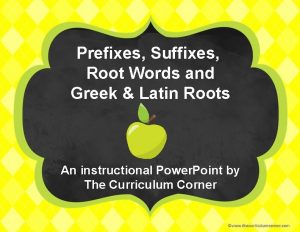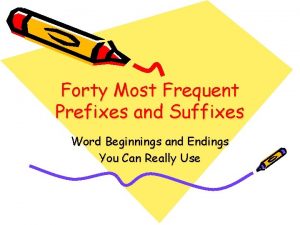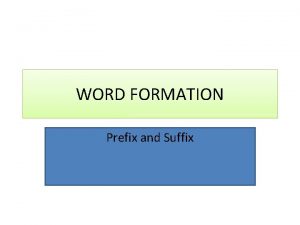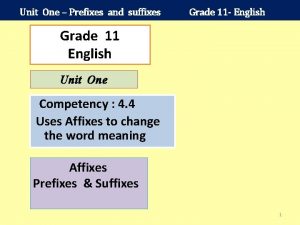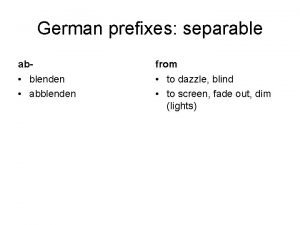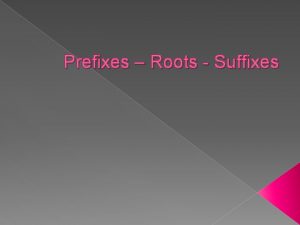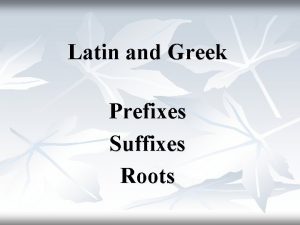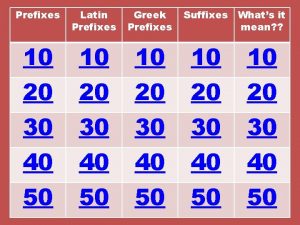What words prefixes suffixes or roots do you








- Slides: 8

• What words, prefixes, suffixes or roots do you see in: • Annotate • Bibliography • Make an educated guess as to the meaning of annotate and bibliography. • Using the dictionary, find and write the definitions for: • Annotate • Bibliography • In your own words, create a definition for annotated bibliography.

What are annot(e)ations?

What is a bibliography?

Creating an Annotated Bibliography

First, create the citations • The first part of an annotated bibliography is the citations. • You will use the citation sheet you were given to complete your citations. • Be sure to remember the following: – Put all citations in alphabetical order – If you don’t have a piece of information, skip it and move on to the next part – Be sure to include a hanging indent for lines 2 and on (meaning all lines of the citation after LINE 1 is indented.

Next, write your paragraph • The second part of an annotated bibliography is to write a paragraph explaining your source you just cited • In the paragraph you should include the following: – Two sentences summarizing the content of the source. – Two sentences explaining how the source helps answer your inquiry question and sub-questions – One sentence telling who would find this source most useful.

A sample annotated bibliography

Another sample Annotated Bibliography Lamott, Anne. Bird by Bird: Some Instructions on Writing and Life. New York: Anchor Books, 1995. Print. Lamott’s book offers honest advice on the nature of a writing life, complete with its insecurities and failures. Taking a humorous approach to the realities of being a writer, the chapters in Lamott’s book are wry and anecdotal and offer advice on everything from plot development to jealousy, from perfectionism to struggling with one’s own internal critic. In the process, Lamott includes writing exercises designed to be both productive and fun. Lamott offers sane advice for those struggling with the anxieties of writing, but her main project seems to be offering the reader a reality check regarding writing, publishing, and struggling with one’s own imperfect humanity in the process. Rather than a practical handbook to producing and/or publishing, this text is indispensable because of its honest perspective, its down-to-earth humor, and its encouraging approach. Chapters in this text could easily be included in the curriculum for a writing class. Several of the chapters in Part 1 address the writing process and would serve to generate discussion on students’ own drafting and revising processes. Some of the writing exercises would also be appropriate for generating classroom writing exercises. Students should find Lamott’s style both engaging and enjoyable.

